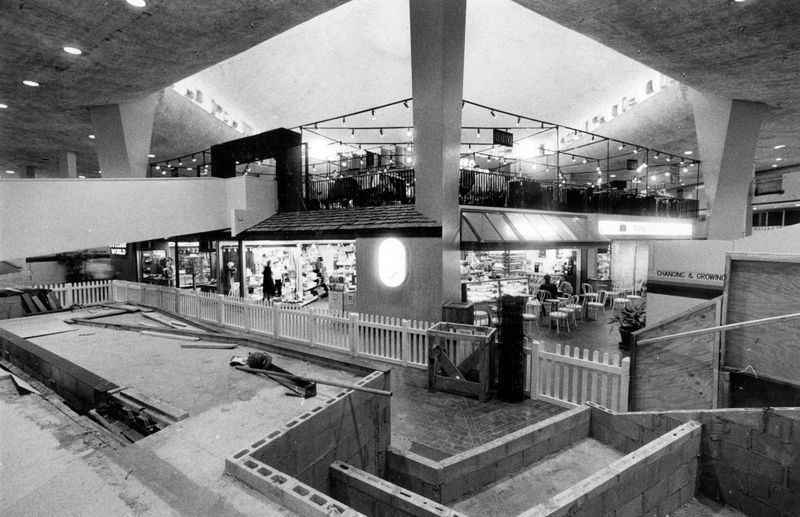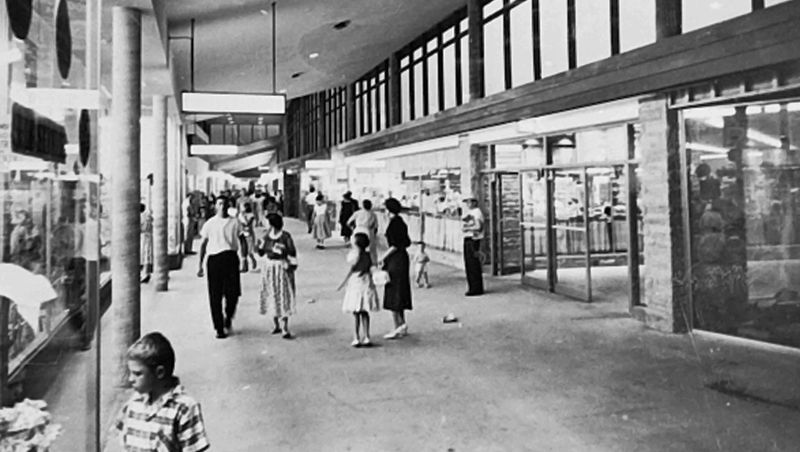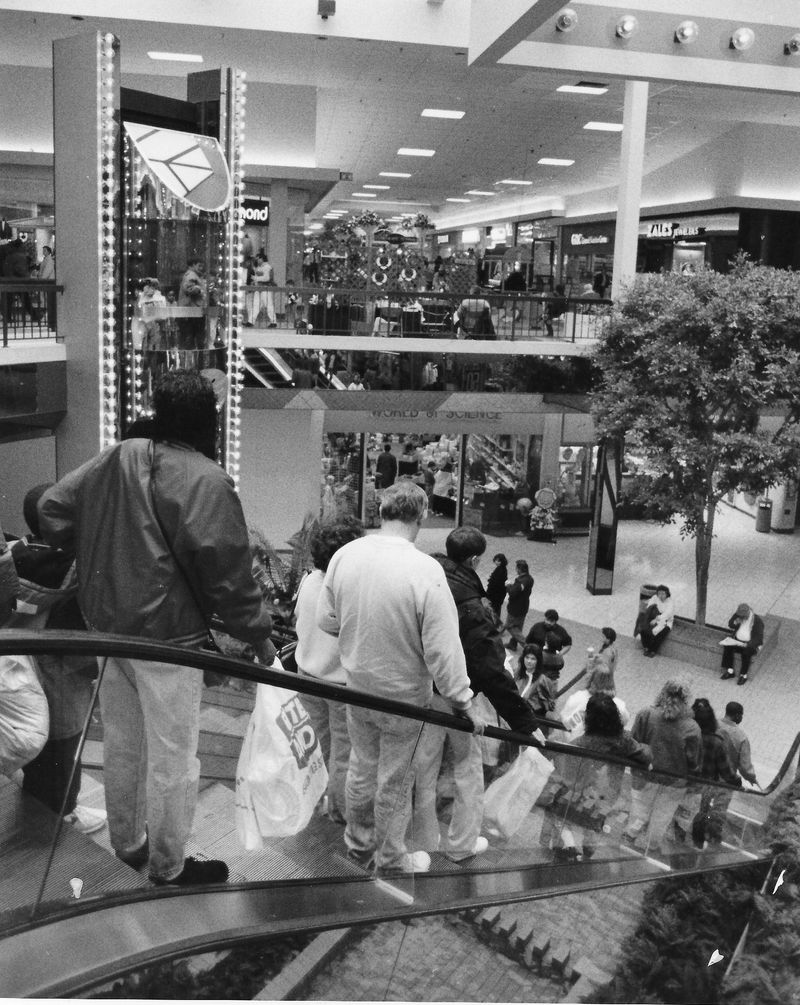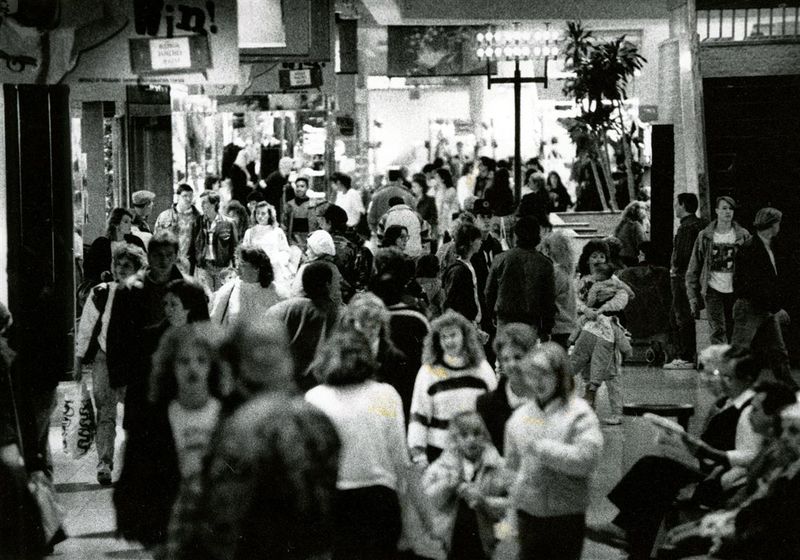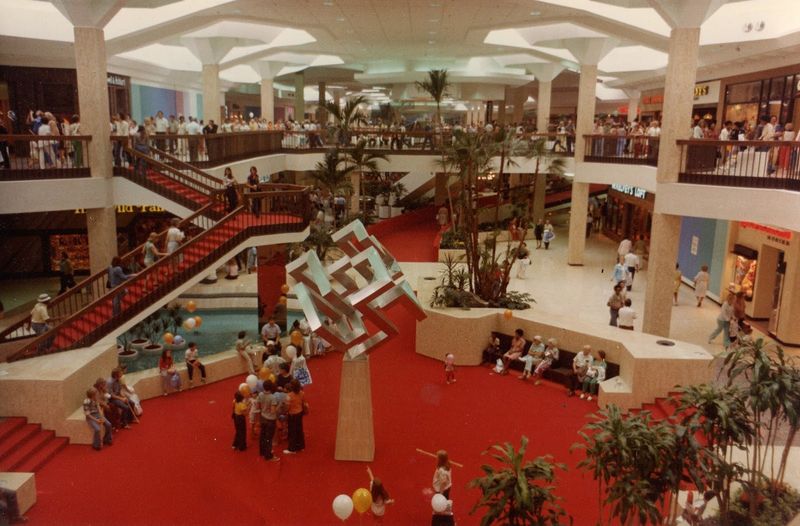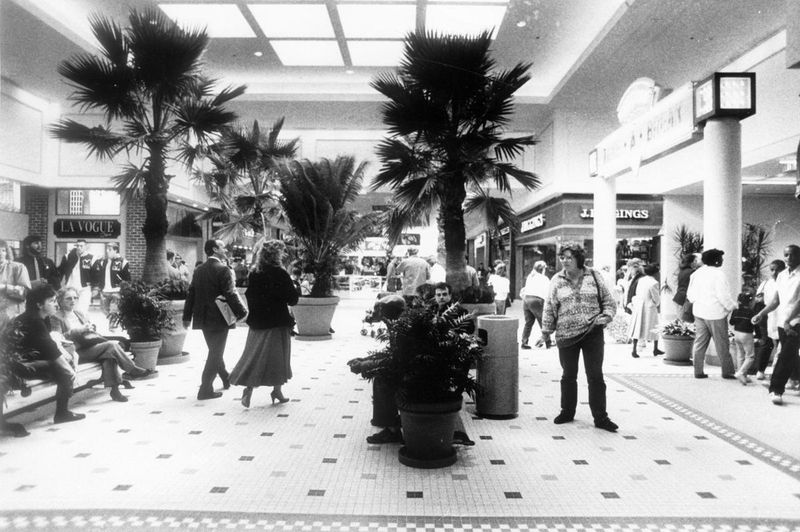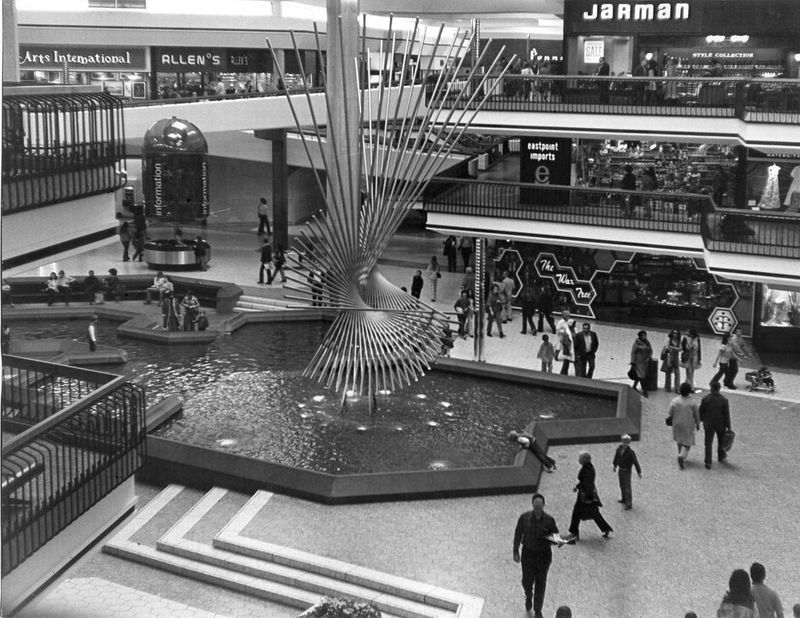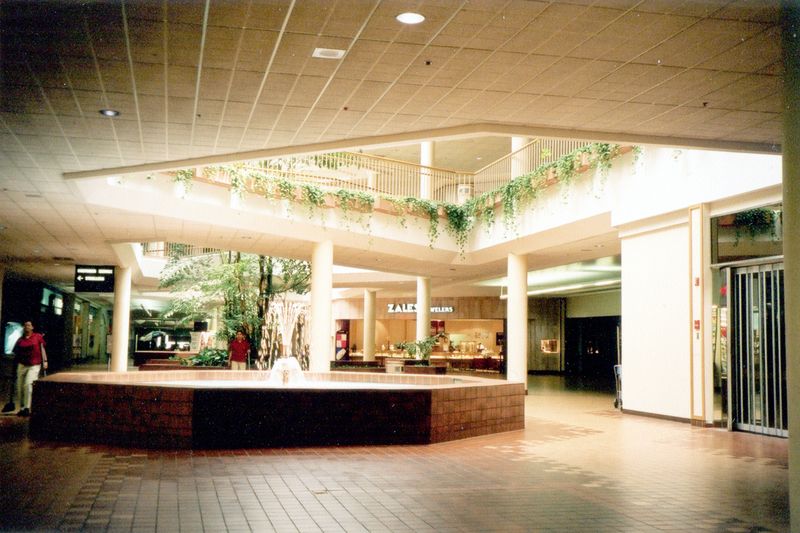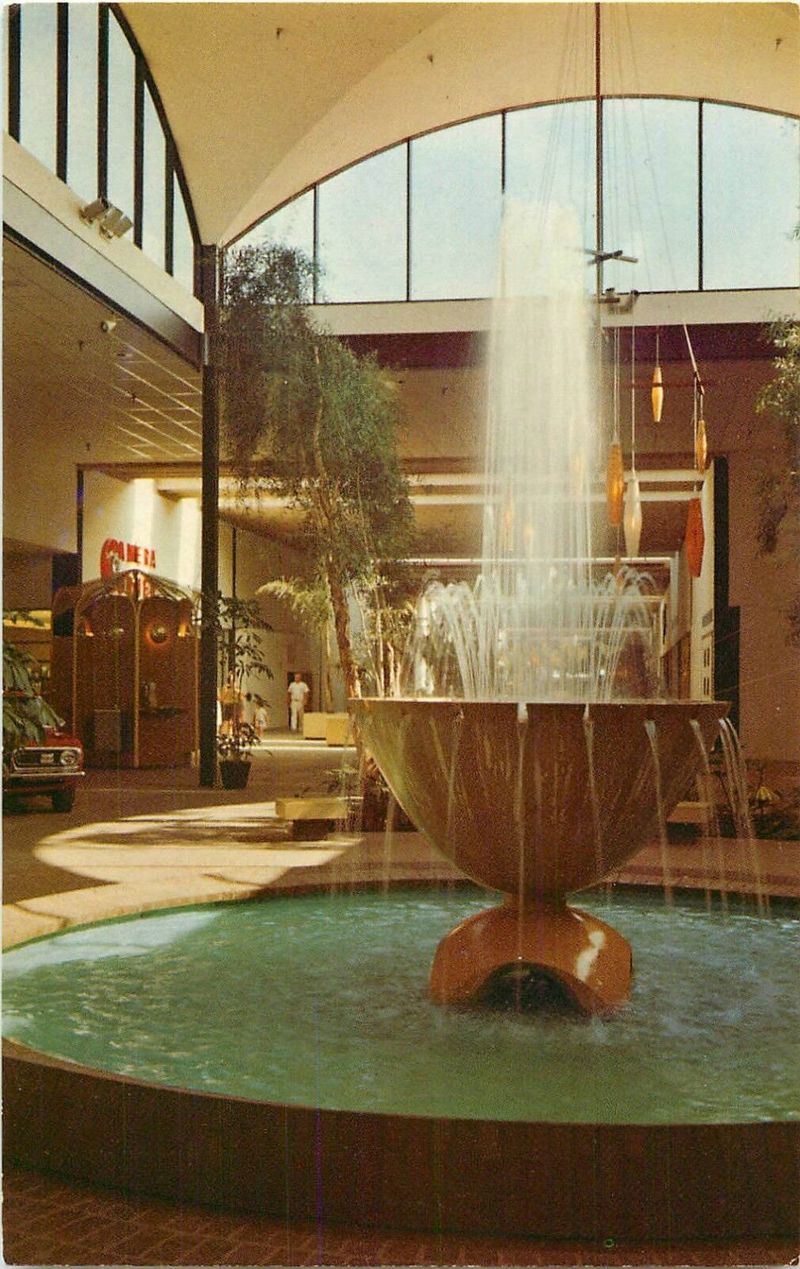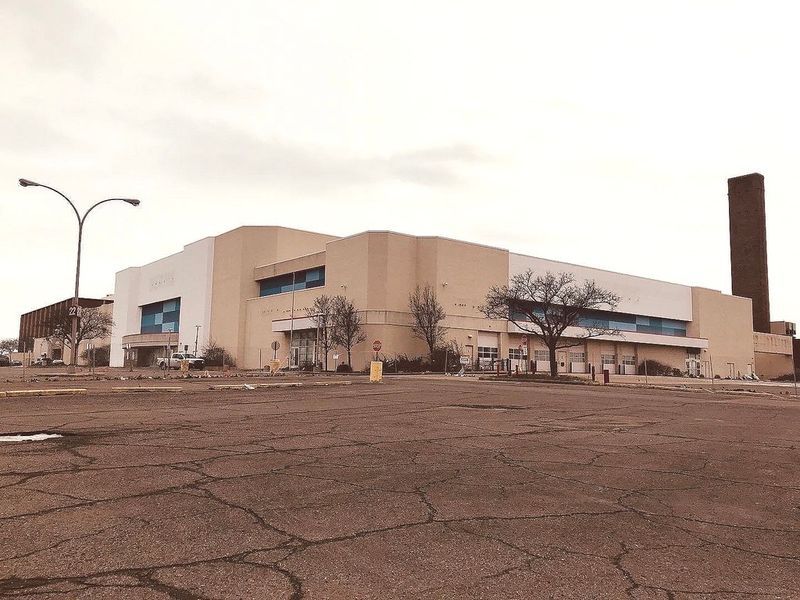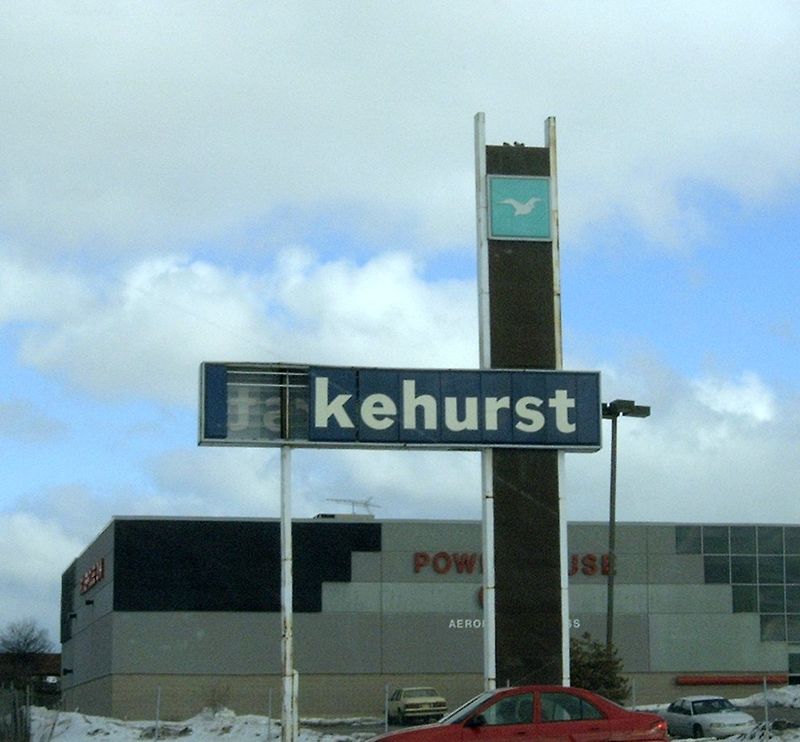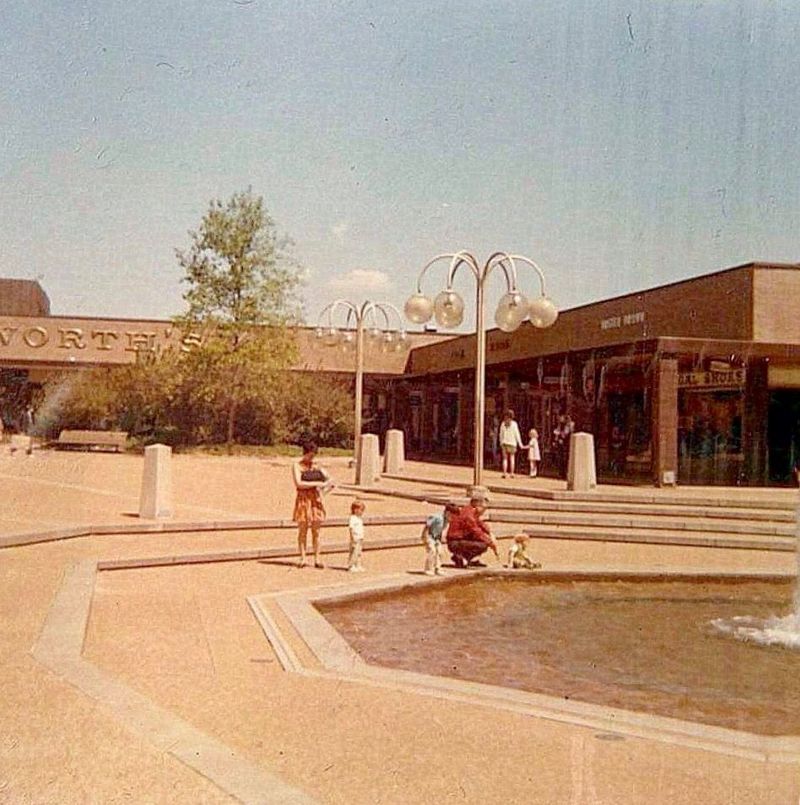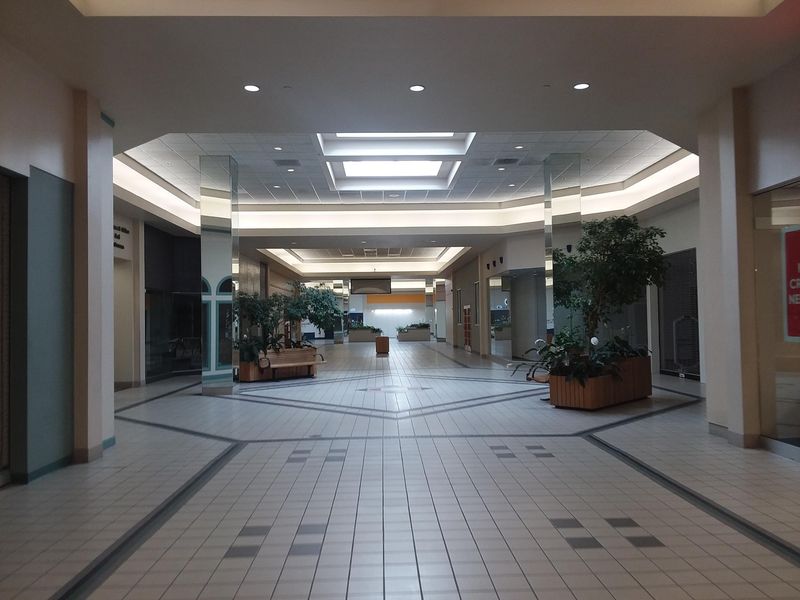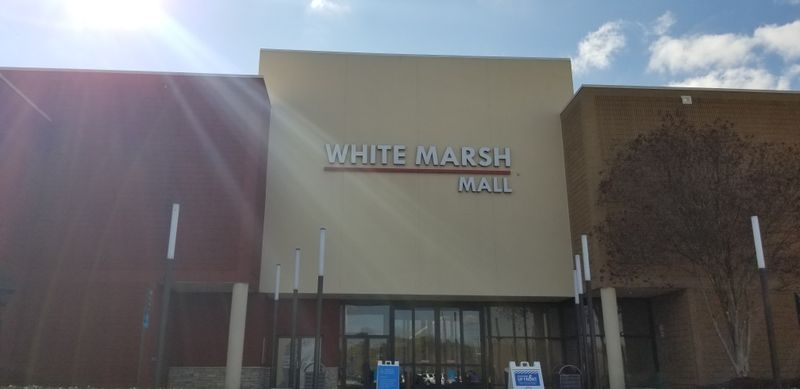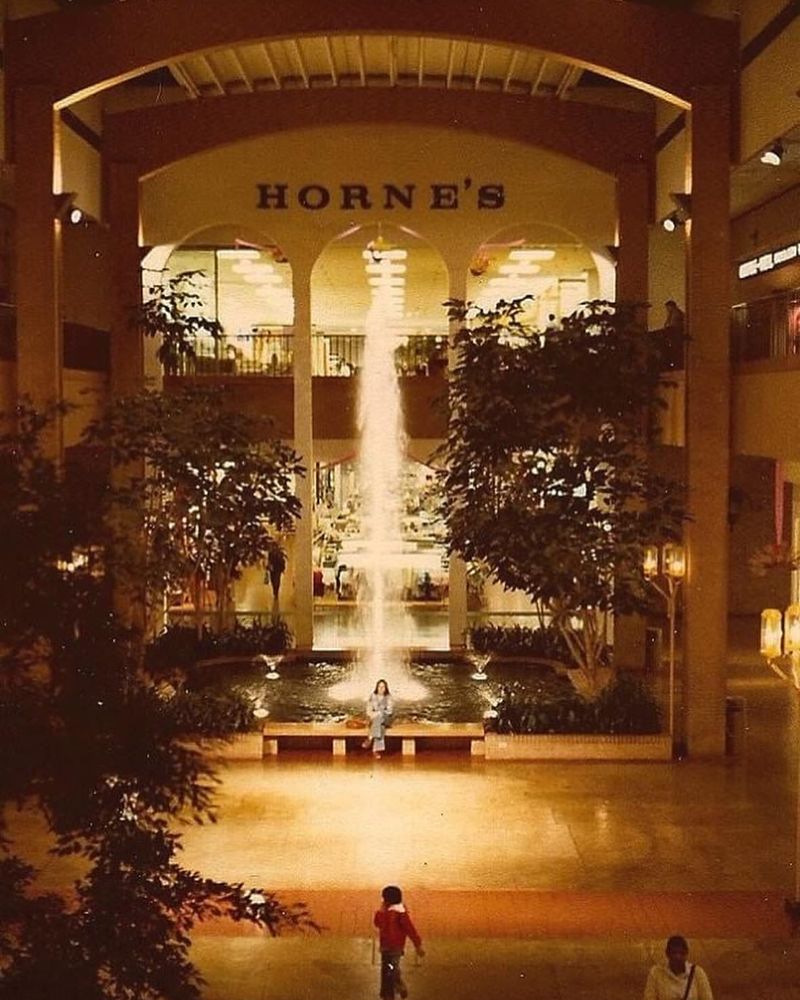The 1970s were a golden era for shopping malls, offering a unique blend of retail, entertainment, and community gathering places.
These iconic structures were more than just shopping destinations; they were cultural landmarks that shaped the social fabric of their time.
Now, many of these malls are just a memory, having been replaced by modern retail concepts or left abandoned. In this blog post, we explore 16 such malls that once thrived in the ’70s but have since faded into the annals of history.
1. Randhurst Mall
Randhurst Mall, located in Mount Prospect, Illinois, was one of the first air-conditioned, enclosed malls in the United States. Opened in 1962, it later became an iconic shopping destination in the 1970s.
Its mid-century modern design, complete with an impressive central dome, made it stand out. The mall featured anchor stores like Carson Pirie Scott and Montgomery Ward, drawing crowds from the surrounding suburbs.
Over time, Randhurst faced challenges from newer developments. It closed in 2008, leaving behind memories of its vibrant atmosphere. Today, it has been redeveloped, but the nostalgic charm of the original mall remains.
2. Valley Fair Mall
Valley Fair Mall, situated in Appleton, Wisconsin, opened its doors in 1954 but reached peak popularity in the 1970s. It was renowned for its bustling environment and diverse range of stores, including local specialties and big-name brands.
The mall’s layout encouraged leisurely strolls and window shopping, embodying the spirit of the era. Despite its success, competition from newer malls led to its gradual decline.
By the late 1990s, it was a shadow of its former self. The building was eventually demolished, but for many, Valley Fair remains a cherished memory of community and commerce.
3. Rolling Acres Mall
Rolling Acres Mall in Akron, Ohio, opened in 1975, and was celebrated as a shopping marvel of its time. Known for its sprawling interior and distinct retro signage, the mall featured popular retailers like JCPenney and Sears.
The cinema complex and food court were particularly favored spots, attracting families and teenagers alike. However, economic challenges in the area coupled with increasing competition ushered in a slow decline.
The mall closed its doors in 2008, and all that remains now are memories of its once-vibrant corridors, where thousands experienced shopping in its heyday.
4. Century III Mall
Century III Mall in West Mifflin, Pennsylvania, opened in 1979 and quickly became one of the largest malls in the country. Its vibrant decor and multi-tiered layout, complete with escalators and elevators, were a shopper’s dream.
The mall offered a variety of stores, ranging from luxury brands to casual retailers. At its peak, it was a bustling hub for the Pittsburgh community. Despite its initial success, the mall’s fortunes waned with changing consumer habits.
By 2019, it was completely shuttered, yet the memories of its dynamic atmosphere live on in the hearts of former visitors.
5. Randall Park Mall
Randall Park Mall, located in North Randall, Ohio, was once dubbed the “world’s largest shopping center” when it opened in 1976. Designed with grandeur, it included a massive atrium and iconic store logos that defined the shopping scene.
Shoppers flocked to its numerous retail options, including department stores and specialty boutiques. The vibrant energy of the mall was palpable, drawing people from all over Cleveland.
Over time, economic downturns and competition led to its decline. It closed in 2009, leaving behind an era defined by bustling commerce and community gatherings, now preserved in the memories of those who experienced it.
6. Cloverleaf Mall
Cloverleaf Mall, opened in 1972 in Richmond, Virginia, was a vibrant shopping destination during the 1970s. Its unique architectural design and colorful interiors attracted locals and visitors alike.
The mall housed a variety of stores, providing a one-stop shopping experience. With its lively crowds and engaging atmosphere, Cloverleaf became a social hub. However, the rise of newer shopping complexes led to its gradual decline.
By the early 21st century, it had lost much of its former glory, eventually closing in 2007. Though no longer standing, the memories of Cloverleaf’s bustling days remain vivid for those who frequented it.
7. Shawnee Mall
Shawnee Mall, located in Shawnee, Oklahoma, captured the essence of 70s shopping with its enclosed spaces and vibrant atmosphere. Opened in 1974, it became a central spot for both shopping and socializing.
The mall featured a range of stores, popular eateries, and arcade games, which made it a favorite among families. Its design reflected the architectural trends of its time, with wide aisles and high ceilings.
Despite its initial success, like many malls of its era, Shawnee Mall faced stiff competition and eventually closed down. Today, it remains a fond memory for those who enjoyed its lively presence.
8. Eastridge Mall
Eastridge Mall in San Jose, California, opened in 1971, exemplified the futuristic design trends of the 70s. Its architecture featured sleek lines and expansive spaces, making it a standout among shoppers.
The mall hosted a diverse range of stores, including entertainment options that attracted various demographics. Eastridge was more than just a retail space; it was a place where the community gathered for social events.
Despite facing challenges over the decades, the mall underwent several renovations to maintain its relevance. Although not as bustling as its peak years, Eastridge still holds a special place in many hearts.
9. Villa Italia
Villa Italia, located in Lakewood, Colorado, opened in 1966 and gained immense popularity in the 70s. The mall’s Italian-inspired architecture, complete with intricate fountains and tile work, offered a unique shopping experience.
Shoppers enjoyed exploring its many boutiques and department stores, while the food court provided a wide array of culinary delights. Villa Italia was a lively and vibrant part of the community, hosting numerous events and gatherings.
Over time, competition from newer malls took its toll, leading to its closure in 2001. Yet, for many, the memories of its bustling days are still cherished.
10. Edgewater Plaza
Edgewater Plaza in Biloxi, Mississippi, opened in the late 1960s, becoming a popular shopping destination through the 1970s. Its coastal location provided a scenic backdrop, enhancing its appeal.
The mall, characterized by its retro style, housed a variety of stores catering to diverse needs. It was a lively hub where locals met for shopping and socializing.
As newer shopping complexes emerged, Edgewater Plaza faced challenges in maintaining its popularity. By the 1990s, its charm had faded, and it eventually closed down. The plaza remains a nostalgic symbol of a bygone era for those who visited it.
11. Eastland Mall
Eastland Mall in Harper Woods, Michigan, opened in 1957 and flourished in the 1970s. Located just outside Detroit, it was renowned for its contemporary architecture and iconic fountains.
The mall featured a blend of major retailers and local shops, drawing a diverse crowd. Families particularly loved the inviting atmosphere and variety of dining options.
However, as shopping habits changed and newer malls appeared, Eastland struggled to keep pace. It gradually declined and was eventually shuttered.
Despite its closure, it holds a cherished place in the memories of those who enjoyed its bustling corridors and vibrant retail offerings.
12. Lakehurst Mall
Lakehurst Mall, located in Waukegan, Illinois, was a centerpiece of shopping in the 1970s. This mid-century marvel opened in 1971, attracting shoppers with its spacious layout and modern design.
It housed numerous stores, from fashion boutiques to electronic outlets, making it a go-to destination for locals. The mall’s thriving presence provided a social space for community interactions.
However, economic shifts and retail competition led to its decline. Lakehurst closed its doors in 2001, leaving behind fond memories of a vibrant shopping era. Its legacy endures in the stories and nostalgia of those who once frequented its halls.
13. Northwest Plaza
Northwest Plaza, in St. Ann, Missouri, was once one of the largest malls in the world when it opened in 1965. Its size and scope made it a prominent shopping destination in the 1970s.
The mall featured a large atrium and a variety of shops that catered to the diverse tastes of its visitors. Stylish shoppers flocked to its stores, enjoying the unique 70s decor.
As time went on, competition from newer malls and changes in shopping trends led to its closure in 2010. Yet, the memories of its bustling days remain vivid for those who walked its corridors.
14. Belknap Mall
Belknap Mall, located in Laconia, New Hampshire, became a beloved shopping destination upon its opening in 1972. Its retro architecture and picturesque surroundings attracted both locals and tourists.
The mall offered a wide range of stores, providing a vibrant atmosphere that appealed to shoppers of all ages. Over the years, the mall faced challenges as retail trends shifted and competition intensified.
It struggled to maintain its former glory and eventually declined. Although it no longer operates as a bustling shopping center, Belknap Mall remains a cherished memory for those who experienced its lively shopping scene.
15. White Marsh Mall
White Marsh Mall, located in Baltimore, Maryland, opened its doors in 1973 and quickly became a major shopping hub. Known for its lively events and diverse range of stores, it attracted large crowds from across the region.
Shoppers enjoyed the mall’s bustling atmosphere and the variety of dining options available. While White Marsh continues to operate today, its 1970s charm remains a nostalgic memory for those who experienced its opening years.
The mall’s ability to adapt over time has ensured its place in the history of shopping centers, even as the landscape of retail continues to evolve.
16. Greengate Mall
Greengate Mall in Hempfield Township, Pennsylvania, opened in 1965 and became a thriving shopping center in the 1970s. Known for its iconic storefronts and retro vibes, it attracted shoppers from all over the Pittsburgh area.
The mall housed a variety of shops, offering something for everyone. Despite its success, the mall faced increasing competition and changes in retail trends.
By the early 2000s, it struggled to maintain its customer base and eventually closed. The memories of Greengate’s lively atmosphere and diverse shopping options continue to resonate with those who remember its bustling days.
